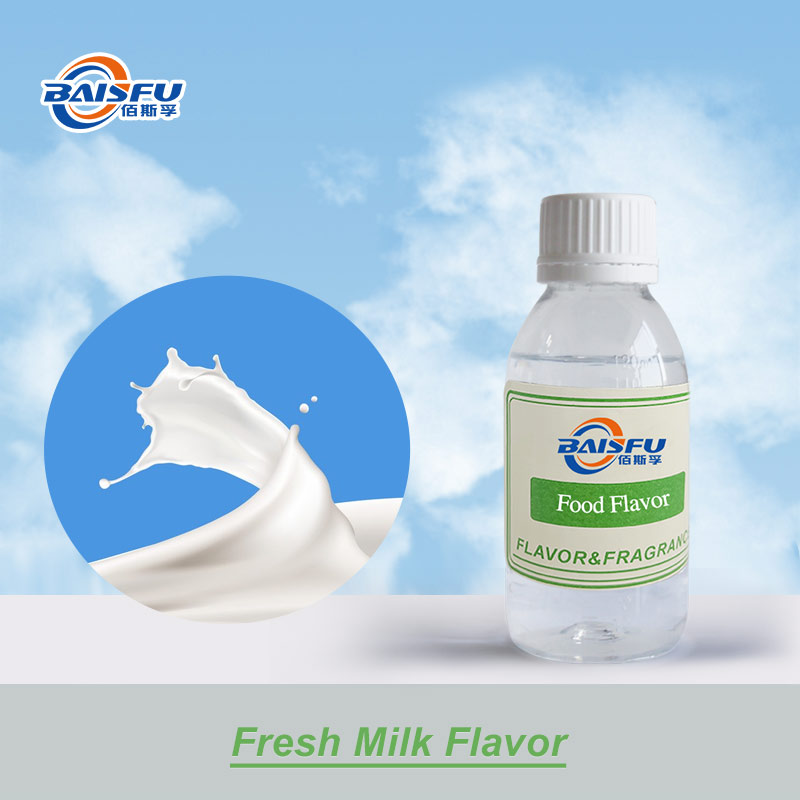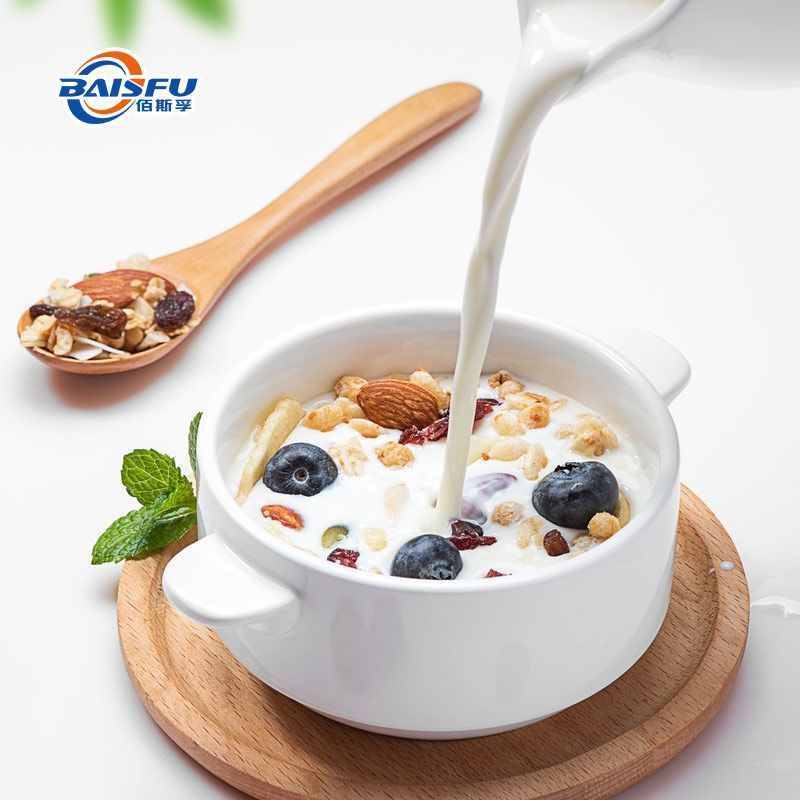Fresh Milk Flavor for Food Industry and Beverage
Fresh milk flavoring is a natural food additive used to enhance or endow food with a rich milk flavor. It is widely used in the food industry, especially suitable for products that cannot directly use fresh milk (such as due to shelf life restrictions, cost control or processing technology requirements), such as milk beverages, baked goods, candies, ice cream, instant milk powder, etc.

Composition of components
The core components of fresh milk flavoring usually include: lactones (such as γ -lactone, δ -lactone) : providing a creamy sweet aroma. Aldehydes (such as hexanal and octanal) : Endow with a fresh milk aroma and a natural feel. Ketones (such as butanedione) : A classic source of “buttery aroma”, enhancing the layers of milk flavor. Esters (such as ethyl acetate) : Add fruity and sweet aromas and balance the overall flavor. Milk fat extract: May contain natural milk fat components to enhance the sense of reality.
Some perfumes also add auxiliary materials such as maltol and vanillin to extend the lingering fragrance time.
Application field
Dairy products: Blended flavored milk beverages, yogurt, cheese, etc. Baking and confectionery: Used for cakes, cookies, chocolates, milk candies, etc. Beverages and ice cream: Enhance the milk flavor of milk tea, coffee companions, and ice cream. Convenience foods: such as instant milk powder, meal replacement powder, etc., make up for the lost flavors during processing.

Production process
Chemical synthesis method: It is formulated by synthesizing key aroma molecules (such as butanedione), which is low-cost and highly stable. Natural extraction method: By using enzymatic hydrolysis, fermentation or distillation techniques to extract natural aroma components from milk or milk fat, it is closer to the true flavor of milk, but the cost is relatively high.
Advantages: Extend the shelf life of food and avoid the problem of fresh milk being prone to spoilage. Reducing production costs is particularly crucial for large-scale industrial production. The flavor is stable and is less affected by temperature and processing conditions.

